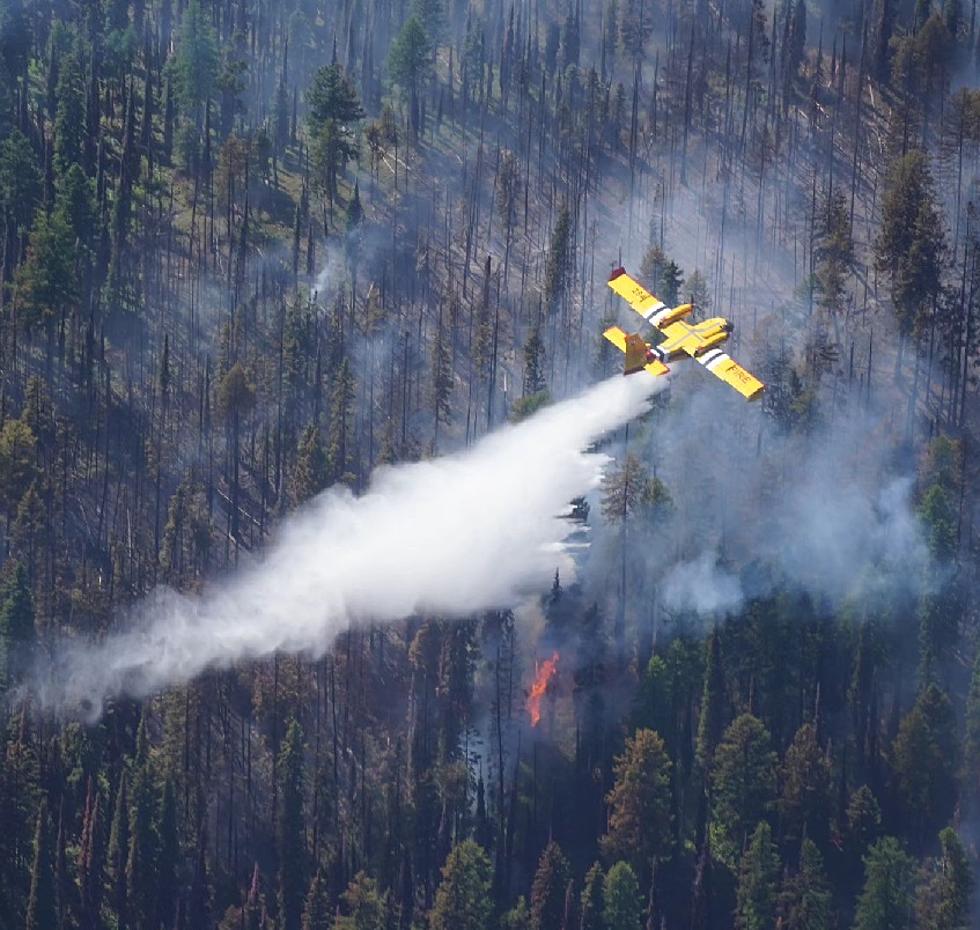
Stricter fire restrictions, emergency declarations in NW Montana
(Daily Montanan) Lake County and the Confederated Salish and Kootenai Tribes adopted Stage 2 fire restrictions and Flathead County commissioners declared a state of emergency Tuesday in the midst of a host of wildfires that have burned more than 20,000 acres of land in the area in recent days.
The new restrictions and emergency declarations went into effect just days after Flathead, Lincoln and Sanders counties adopted Stage 1 fire restrictions and a dry lightning event started at least 17 wildfires on the Flathead National Forest on Saturday and Sunday.
Flathead County raised its fire danger level to extreme on Tuesday and its board of county commissioners declared an emergency because of the fires and drought that activates an emergency plan and allows the county to spend emergency money for firefighting. County officials told residents to be prepared to evacuate if necessary.
“After fighting the fires from this weekend, Flathead County is looking good, but that could change at any minute,” Flathead County Sheriff Brian Heino told commissioners, according to the office of emergency services.
U.S. Department of Agriculture Secretary Tom Vilsack designated Flathead and Lincoln counties as primary drought natural disaster areas on Monday, adding them and some adjacent counties to the list of counties now eligible for federal emergency loan assistance.
The CSKT Division of Fire also raised the fire danger on the Flathead Indian Reservation to extreme Tuesday and enacted Stage 2 fire restrictions.
“While we cannot regulate the lightning, we CAN control our human caused sparks,” CSKT officials said in a news release.
Lake County officials also enacted Stage 2 restrictions effective Tuesday, which ban campfires, the use of vehicles off designated roads, and the use of chainsaws, blasting or welding equipment outdoors from 1 p.m. to 1 a.m. daily, with limited exceptions.
The CSKT Division of Fire said a complex incident management team will take command of several fires in the area and bring in more resources, as several of the fires first spotted Sunday have grown to thousands of acres.
The Niarada Fire burning 11 miles west of Elmo is estimated to be more than 5,000 acres and has at least 10 aircraft, smoke jumpers and other firefighters working on it. The Middle Ridge Fire southwest of Sloan’s Bridge is estimated to have grown to nearly 11,000 acres. The Big Knife Fire east of Arlee was nearly 2,000 acres as of Tuesday and had more than 100 firefighters on scene.
The Communication Butte Fire north of Dixon was an estimated 1,500 acres Tuesday and jumped the Flathead River overnight, CSKT fire officials said. And the Mill Pocket Fire burning west of Niarada was 600 acres on Tuesday as it moved east.
The CSKT bison range has reopened after its closure on Sunday and Highway 28, which had also been closed after fire jumped the road earlier this week, was reopened with speed restrictions, according to CSKT officials.
The Flathead National Forest said 17 fires were reported across three districts after the weekend lightning storm, most of which were small, but firefighters continue to fight, the forest said Monday evening.
Gov. Greg Gianforte is set to visit the Colt Fire on Wednesday and receive a briefing from incident command. The fire burning about 15 miles northwest of Seeley Lake has scorched 6,704 acres and was 8% contained as of Tuesday morning, with 589 fire personnel at the scene.
Much of northwest Montana is experiencing severe or moderate drought that has worsened as the summer has gone on. The Kalispell area received just 0.82 inches of rain since the start of June and just 5.23 inches of precipitation since the beginning of the year, compared to 10.65 by this point in an average year, according to the National Weather Service.
That has put 87% of Flathead County, 51% of Lake County, 74% of Sanders County, and 76% of Glacier County into the severe drought category as of last week, when none of them were experiencing severe drought at the end of April.
